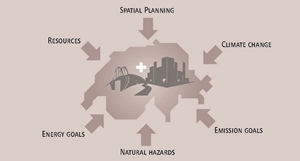Dr. Peter Richner
Current Position
- Coordinator Research Initiative Mining the Atmosphere
- Development Climate Solutions Hub
- Host NEST Podcast
Area of Expertise
- Knowledge and Technology Transfer for the Construction Sector
- CO2-negative Building Materials
Membership in National and International Committees
- Advisory Board "Energy" Federal Institute for Material Research and Testing (BAM), Germany, head of Advisory Board
- Energy Cluster Switzerland, Vice President of the Board
- International Union of Laboratories and Experts in Construction Materials, Systems and Structures (RILEM), Former President (2009-2012)
Curriculum Vitae
- Professional Career
- 2012 - 2025 Deputy Director Empa
- 2002 – 2024 Empa, Head of Department "Engineering Sciences"
- 2000 – 2001 Empa, Member of the Directorate of Empa Dübendorf
- 1995 – 2000 Empa, Head of the Laboratory for Corrosion and Surface Protection
- 1990 – 1995 Empa, Head of the Group for Plasma-Source Mass Spectrometry
- 1989 – 1990 Indiana University, Postdoc funded by the Swiss National Science Foundation with Prof. Dr. G. M. Hieftje, Department of Chemistry, "Tandem-Source Plasma Mass Spectrometry"
- Education
- 2002 – 2004 EMBA at University of St Gall
- 1985 – 1989 PhD in Chemistry at ETH Zurich with Prof. Dr. B. Magyar "Fundamentals, Mechanism and Application of the Adsorption Polarography of Molybdenum(VI)"
- 1979 – 1984 Diploma in Chemistry at ETH Zurch

List of Publications (PDF)
Rethinking our built infrastructure

-
Share
